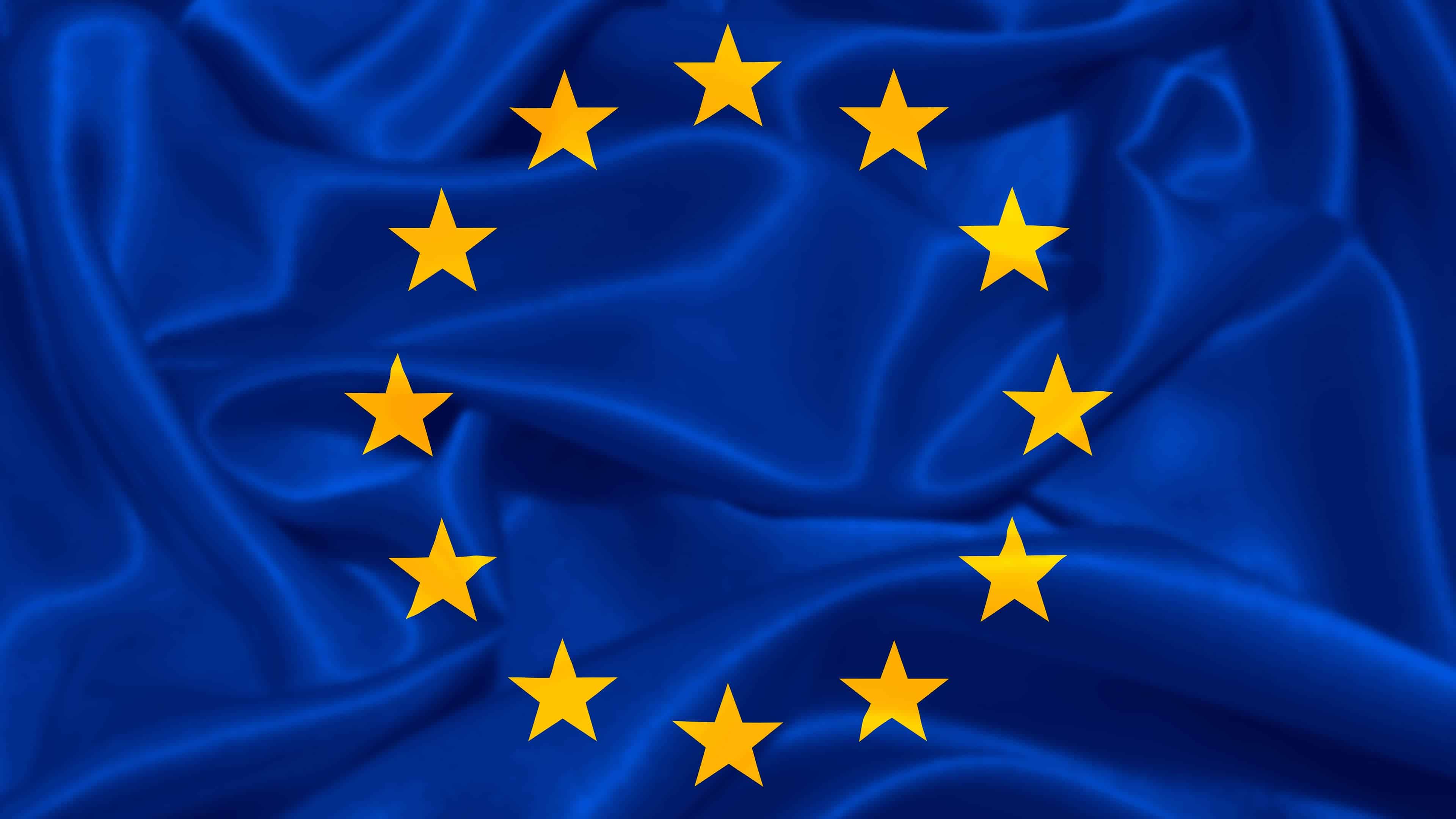

deleted by creator


deleted by creator


Increased geopolitical tensions could yet see Oslo rethink its attitude towards Brussels

Norwegian soldiers patrol the border with Russia. Were Trump to downgrade the US role in Nato, Oslo would feel much more vulnerable to pressure from Moscow and Beijing © Maxim Shemetov/Reuters
The writer directs the Center on the US and Europe at the Brookings Institution
European capitals are contemplating the return of Donald Trump on January 20 with a degree of unease. The US president-elect is known, after all, to harbour less than warm-and-fuzzy feelings towards Nato and the EU.
All European capitals? Not quite. Consider Oslo, where senior Norwegian politicians like to remark reassuringly that “our bilateral relationship with the US will always be safe”. And they do have some excellent points in their favour.
Norway, a founding member of Nato and its eyes and ears in the Arctic, is the guardian of the North Atlantic exit route for the Russian submarine fleet based on the Kola Peninsula. It plans to overshoot Nato’s defence spending goal of 2 per cent of GDP by 2025, and its long-term defence plan will nearly double the defence budget by 2036; a “civil defence brochure” tells citizens how to stock up for emergencies, including war. It is a major supporter of Ukraine. Fifty-two per cent of Norway’s $1.8tn sovereign wealth fund is invested in North America. It even has a trade deficit with America. These are all things the president-elect likes.
Ask around in Oslo, though, and concerns quickly surface. Trump’s enthusiasm for tariffs is a particular source of anxiety, as Norway is not a member of the EU. “If the US levies tariffs on Europe, and the EU retaliates with countertariffs, we’ll be hit with a double whammy,” sighs one official.
Apprehensions about security are also rife. Russia and China have been muscling into the Arctic. They are especially keen on the archipelago of Svalbard, which is Norwegian territory, but under a century-old international treaty allows other countries to exploit resources and conduct research. Were Trump to downgrade the US role in Nato, Oslo would feel much more vulnerable to pressure from Moscow and Beijing. And what if Russia’s president Vladimir Putin, in return for a ceasefire in Ukraine, were to demand US support for tweaks to the European security order — say an expanded Russian and Chinese foothold on Svalbard?
Could all this make the EU appear in a new light? Norway said no to joining in two referendums in 1972 and 1994, joining the European Economic Area (EEA) instead. A November poll still has only 34.9 per cent of Norwegians saying their country should join, with a plurality of 46.7 per cent against. Still, that is down from more than 70 per cent against in 2016.
Policymakers in Oslo note the EU’s competitiveness struggles and the rise of the far right, as well as their own domestic obstacles like fishery or agricultural interests. But they have also been watching the speed and determination with which Finland and Sweden have integrated into Nato. One points out that Helsinki is about to get its own Nato land command in 2025, and Stockholm gained a director-general position in the alliance’s international civil service, “while we have neither!”
Indeed, Norway’s global commitment to diplomacy, international institutions and law, its military seriousness, its generous development aid, its position as one of Europe’s key energy suppliers following the near-complete decoupling from Russia, and finally its stupendous wealth fund would all make it a prime candidate for expedited membership in the EU.
So the dilemma for an interdependent and exposed Norway is — as the newspaper Aftenposten put it memorably after Trump’s re-election — whether to become “the 51st state of the US, like a kind of Puerto Rico” or the 28th member state of the EU. The appeal of the latter option is that Norway would be moving in at the top floor. At a time when both Paris and Berlin are barely able to lead, it could not just shift the balance of power in Europe, but initiate a restart.
For Norway is not the only European country that is quietly weighing its options. Pro-EU parties won Iceland’s November parliamentary election. Switzerland is wrapping up negotiating a treaty package with the EU, and its hallowed neutrality is the subject of a vibrant national discussion. Ireland is not a Nato member, but it too has been tightening its ties with the alliance. Sweden’s debate on swapping the weak krona for the euro has remained inconclusive; but war in Europe could make joining the Eurozone look like additional political insurance.
A sceptical Norwegian banker contends it would take a political “meteorite” to shift his country’s posture on joining the EU. Given the experience of the first Trump administration, that is hardly unimaginable. But it would be ironic if the 47th president were to become a great unifier of Europe.


Dell Cameron Dec 17, 2024 11:31 AM

Photograph: Anton Petrus; Getty Images
The Department of Homeland Security issued warnings to state and local law enforcement agencies this summer regarding the “growing illicit use” of commercial drones, internal documents show. Among the recommended steps was to conduct “exercises to test and prepare response capabilities.”
A DHS memo from August, which has not been previously reported, paints US cities as woefully underprepared for the “rising” threat of weaponized drones. The capabilities of unmanned aircraft systems (UAS) are “progressing faster” than available countermeasures offered under “federal prevention frameworks,” the memo says, adding that it’s common for state and local authorities to observe “nefarious” and “noncompliant” flights but still lack the authority to intervene.
The memo states that violent extremists in the US are increasingly searching for ways to modify “off-the-shelf” drones to ferry dangerous payloads, including “explosives, conductive materials, and chemicals,” with major advancements in the area being propelled largely by rampant experimentation on foreign battlefields, including those in Ukraine.
The document indicates that DHS has been urging local agencies for months to scout for possible launch sites near and around critical assets, while offering a slew of recommendations designed to mitigate a threat that the agency insists is growing by the day. Local officials have been advised to reposition CCTV cameras to aid in capturing evidence of airborne threats, and to start training local police on how to handle downed drones believed to carry hazardous and explosive materials. Additionally, the agency has urged local agencies to generously deploy, where legal, sensors capable of detecting and identifying commercial drones.
The memo, first obtained by Property of the People, a nonprofit focused on transparency and national security, was circulated roughly three months before the recent flurry of alleged drone sightings along the East Coast—growing national interest in which has been driven in part by the government’s own nebulous response.
New Jersey residents have been steadily reportingbright lights and flying objects in the sky over the past few weeks. At the same time, federal authorities have worked to downplay the significance of the reports. While Homeland Security secretary Alejandro Mayorkas conceded in an interview on Sunday that “people are seeing drones,” DHS had issued a statement days earlier declaring that “numerous detection methods” had failed to corroborate “any of the reported visual sightings.”
In the memo obtained by WIRED, DHS displays less confidence in its ability to detect menacing drones. The document, which authorities were instructed not to make public, states that “tactics and technology to evade counter-UAS capabilities are circulated and sold online with little to no regulation.” In reality, the ability of police to track errant drones is hindered by a range of evolving technologies, the memo says, including “autonomous flight, 5G command and control, jamming protection technology, swarming technology, and software that disables geofencing restrictions.”
The mystery in New Jersey and similar phenomena in Pennsylvania, New York, and Maryland, among other states, have put a spotlight on the ongoing efforts of state and federal legislators to expand the government’s access to counter-UAS technology. Speaking to reporters via Zoom on Saturday, a DHS official said the agency is urging Congress to “extend and expand existing counter-drone authorities,” and ensure “state and local authorities are provided the tools they need to respond to such threats as well.”
Currently, only a handful of federal agencies—including DHS and the Departments of Energy, Justice, and Defense—are legally permitted to bring down a drone inside US airspace.
Property of the People’s executive director, Ryan Shapiro, says the August memo makes clear that DHS is working steadily to obtain new technologies and legal privileges for law enforcement. But any impact to Americans’ civil liberties, he says, should not be justified by simply pointing to a “nebulous, misleadingly constructed threat.”
While terms like “violent extremists” conjure images of neo-Nazis and domestic terrorists hoping to incite a second US civil war, Shapiro says the government has also deceptively applied such labels to help undermine animal rights groups at the behest of corporations. Activists have relied heavily on drones over the past decade, he says, to help gather evidence of cruelty on factory farms—where recording undercover has been criminalized under so-called “ag-gag” laws.
During Saturday’s briefing, FBI officials said authorities had received roughly 5,000 drone tips in connection with the East Coast sightings, ultimately generating around 100 viable leads. Most of the reports appeared consistent, they said, with misidentified flights landing and taking off from major airports in the region.
While the FBI worked to allay concerns stemming from the recent sightings, it also urged Americans not to wholly dismiss the idea that rogue drones pose a serious threat. “It is well known to us that criminals breaking the law do, in fact, use [drones] to support their actions,” an official said, adding that, in contrast, the recent widespread sightings appear largely benign.
In a statement to WIRED, a DHS spokesperson said the agency is continuing to “advise federal, state, and local partners to remain vigilant to potential threats and encourages the public to report any suspicious activity to local authorities.”


DPA
Fri, November 22, 2024 at 2:12 PM GMT+1 2 min read
Christine Lagarde, President of the European Central Bank (ECB), speaks at the “Frankfurt European Banking Congress.” Helmut Fricke/dpa
Europe urgently needs to make progress in creating a capital markets union in the face of looming trade conflicts, European Central Bank chief Christine Lagarde warned on Friday.
The proposed Capital Markets Union (CMU) is “key for becoming more resilient in a fragmenting world economy,” Lagarde told the European Banking Congress in Frankfurt.
“Capital markets are the missing link for Europeans to turn their high savings into greater wealth – which will ultimately enable them to spend more and strengthen our internal demand,” argued Lagarde.
“However, this growing urgency has not been matched by tangible progress towards CMU, in large part because its implementation remains loosely defined,” she added.
The CMU is essentially about removing bureaucratic hurdles between the individual states of the European Union in order to create a single market for capital across the bloc. Companies would then have more opportunities to raise money, for example.
The European Commission’s plans have been on the table since 2015.
The EU is also aiming to encourage retail investors to invest in local financial markets so that more capital is available for the green and digital transitions.
Europe must offer savers products that are accessible, transparent and affordable, said Lagarde: “In my view, a ‘European savings standard’ – a standardized, EU-wide set of savings products – is the best way to achieve these goals.”
When Europeans’ savings reach the capital markets, they do not spread throughout the European economy, she noted: “Capital in Europe is either trapped within national borders or leaves for the United States.”
At last year’s banking congress, Lagarde spoke in favour of a European stock exchange supervisory authority to overcome the fragmentation of the European capital market.
While the strong capital market in the US has benefited from the standardized supervision of the Securities and Exchange Commission (SEC) for decades, direct supervision in Europe largely takes place at the national level, Lagarde told the congress on Friday.
This leads to fragmentation in the application of EU regulations, she said.
Christine Lagarde, President of the European Central Bank (ECB), speaks at the “Frankfurt European Banking Congress.” Helmut Fricke/dpa


Researchers believe the shift to Linux malware is due to improvements in Windows endpoint security. As a result, threat actors are exploring new attack avenues, increasingly focusing on exploiting flaws in internet-facing systems, most of which run on Linux.
I don‘t get the reasoning here… these servers ran Linux before so what has that to do with Windows endpoints?
What getting no couch does to a mf

photograph: alamy
Sep 12th 2024
Norway’s gdp per person is $94,600, some 11% higher than America’s. The country’s unemployment rate is 2%. Growth, though slowing, has been higher than the rest of Europe’s in recent years. And the Norwegian sovereign-wealth fund, capitalised with oil revenues, is now worth over $300,000 per inhabitant.

chart: the economist
What could be better? Answer: the currency. Norwegians are fretting about the krone, which since the end of 2020 has fallen by 8% against a trade-weighted basket of currencies and flirted with all-time lows against the dollar and the euro, following a decade of slower-paced weakening (see chart). In a country that imports almost all its consumer goods, this has added to inflationary pressure. Norges Bank, Norway’s central bank, is confused as to how the country’s economy can be doing so well and its currency so poorly. An official currency commission may follow.
One commonly cited explanation for the fall in value is a lower oil price. Although this may account for some weakness, it fails to explain why the krone did not rebound along with energy prices in 2021-22. Instead, it fell in 2022 even as oil prices surged. Something else is at play.
Analysts at Apollo Asset Management look to interest-rate differentials. As the Federal Reserve raised rates aggressively in 2022-23, the attractiveness of holding dollars rather than krone rose. Norges Bank, responding to the currency’s weakness, seems set to hold rates at 4.5% for the rest of this year, even as the Fed cuts. But this does not tell the whole story either, since the krone has weakened against lots of currencies, including the euro, with which interest rates diverged much less.
Perhaps it is freak pricing. Low trading volumes mean that anomalies may persist, as big investors will be reluctant to enter the market, given that large interventions will interfere with prices. The Bank for International Settlements, a central-banking club, puts krone turnover at just $125bn a day, against $2.3trn for the euro.
A final possibility will be the most alarming to Norwegians. The krone could still be overvalued, with its long march down being a return to normality after the country became a safe haven from the economic turmoil that hit Europe a decade ago. The Economist’s Big Mac index notes that a burger was priced at nkr74 in Norway against $5.69 in America as of June, implying an exchange of nkr13 to the dollar compared with the market rate of nkr11. A further fall would be good news for tourists in Oslo, who would no longer be quite so shocked by the prices. It would be less welcome for Norwegian consumers.
For more expert analysis of the biggest stories in economics, finance and markets, sign up to Money Talks, our weekly subscriber-only newsletter.
This article appeared in the Finance & economics section of the print edition under the headline “Nordic noir”


Kommt die Wende bei Mozilla? Unter der neuen Chefin Laura Chambers startet Mozilla eine umfassende Reorganisation.
Artikelveröffentlicht am 14. Februar 2024, 7:39 Uhr, Andreas Fischer

Für Firefox könnten wieder neue Zeiten anbrechen.(Bild: KI-generiert durch Bing Image Creator/Dall-E)
Keine Woche nachdem die langjährige Mozilla-Chefin Mitchell Baker ihren Wechsel vom CEO-Posten auf den der Executive Chairwoman der Mozilla Foundation bekannt gegeben hat, baut das Unternehmen 60 weitere Stellen beziehungsweise etwa fünf Prozent der Belegschaft ab. 2020 verloren bereits 250 Mitarbeiter ihren Job bei dem Firefox-Anbieter.
Der erneute Stellenabbau betrifft laut Bloomberg vor allem Mitarbeiter in der Produktentwicklung. Man wolle sich in Zukunft mehr auf Bereiche wie Firefox Mobile konzentrieren, in denen man die größten Erfolgschancen sehe, kündigte Mozilla an.
Auf der anderen Seite werde man Investitionen in Produkte wie VPN, Relay sowie einen Dienst reduzieren, mit dem Anwender bei Datenbrokern über sie gespeicherte Daten löschen lassen können. Darüber hinaus will Mozilla seine 3D-Umgebung Hubs abschalten und weniger Aufwand bei seiner Mastodon-Instanz mozilla.social betreiben.
Techcrunch veröffentlichte zudem ein internes Memorandum, in dem Mozilla ankündigte, sich künftig unter anderem mehr auf “vertrauenswürdige KI für Firefox” zu konzentrieren. Dazu werde man die Teams zusammenfassen, die sich bislang mit Pocket, Inhalten und KI beschäftigt hätten.
Die Umstrukturierung erfolgt kurz nachdem das Unternehmen Laura Chambers zur Interims-CEO ernannt hatte. Die Australierin nannte als eine ihrer wichtigsten Aufgaben eigentlich die Suche nach einem neuen Chef für den Firefox-Anbieter und nicht eine Reorganisation.
Die Änderungen deuten nach Ansicht von Techcrunch aber darauf hin, dass sich Mozilla wieder stärker auf sein Kernprodukt – den Browser Firefox – konzentrieren könnte. In der Vergangenheit brachte die Organisation zahlreiche neue Produkte heraus und vernachlässigte Firefox. Wohl auch deswegen verlor der früher sehr beliebte Browser immer mehr Marktanteile.
By Mark Gurman
February 13, 2024 at 7:16 PM UTC
Mozilla Corp., the maker of web browser Firefox, is cutting about 60 jobs as part of a shake-up under a new chief executive officer.
Mozilla said that the move affects about 5% of its workforce and that the cuts were primarily in the product development organization. The company informed employees of the decision on Tuesday.
“We’re scaling back investment in some product areas in order to focus on areas that we feel have the greatest chance of success,” Mozilla said in a statement. “We intend to re-prioritize resources against products like Firefox Mobile, where there’s a significant opportunity to grow and establish a better model for the industry.”
The move comes a week after the company named Laura Chambers as its CEO. She’s a former Airbnb Inc. and eBay Inc. executive who joined Mozilla’s board three years ago. Mitchell Baker, Mozilla’s longtime chief, stepped down to become the company’s executive chairman.
Mozilla last cut a significant number of jobs four years ago at the height of the Covid-19 pandemic. The not-for-profit company, which competes with Alphabet Inc.’s Google Chrome, Apple Inc.’s Safari and Microsoft Corp.’s Edge, has been grappling with sliding market share of its Firefox web browser in recent years.
In addition to Firefox, Mozilla’s products include email software Thunderbird and article-saving app Pocket.
The move comes after a string of tech layoffs, with more than 32,000 jobs lost in the industry so far this year. Several major tech companies have made cuts in recent weeks, including Amazon.com Inc. and Snap Inc.
— With assistance from Jackie Davalos
I really don’t get why I should use anything else than dd


By Natalia Ojewska, Aliaksandr Kudrytski, and Colum Murphy
July 24, 2024 at 5:02 AM UTC
Poland has threatened to choke off a key Chinese rail export route to the European Union in a diplomatic gambit to slow escalating the migration crisis on its eastern border.
President Andrzej Duda used his state visit in Beijing in late June to link the issue of migration and freight transit on the Belarusian border, according to people briefed on the talks. The number of irregular crossings from Belarus into Poland has dropped significantly since.
Alexander Lukashenko, the authoritarian leader of Belarus, has spent the last three years trying to stir up a migration emergency on his country’s 400 kilometer (250 mile) frontier with Poland. Tensions escalated in May when a Polish border guard was attacked and killed by a migrant, after which the government in Warsaw pledged to spend around $2.5 billion to fortify the area.
It also found a diplomatic pressure point. As Russia’s invasion of Ukraine shuttered trade routes, Belarus has emerged as the sole railway link for Chinese goods heading to the EU with the volume of containers increasing by 89% in the first quarter of 2024, according to the Eurasian Rail Alliance.
Poland keeps only three checkpoints with Belarus open
Lukashenko welcomed the jump in Chinese rail transit, eager to offset Belarus’ near-total dependence on Russia for cheap energy and loans.
On July 2, after Duda had returned from Beijing, Poland signaled that it would effectively shut rail transit through the Malaszewicze checkpoint on the Belarus border for 33 hours by slowing security and customs checks.
Poland’s leveraging of freight transit in discussions with China “could be a factor” in the lower numbers of border crossings since Duda’s visit, Foreign Minister Radoslaw Sikorski told Bloomberg. “We are still very angry about the killing of our soldier on the border,” he said.
Attempts to breach Poland’s border have ebbed and flowed in recent years, but began to rise sharply in the weeks before European parliamentary elections in June. Polish Prime Minister Donald Tusk said the migrants were predominantly from Yemen, Somalia, Afghanistan, Syria and Iran and accused Belarus and Russia of weaponizing migration.
The Polish president’s trip to China caught Lukashenko’s attention. In a speech on July 2, the Belarusian leader said that Duda “asked Xi Jinping to influence Lukashenko and Putin so that they would end migration.”
The Chinese Foreign Ministry said in a reply to July 11 questions from Bloomberg News that Beijing “hopes that relevant parties can properly resolve differences through dialog” and “ensure the security and smoothness of international logistics channels.”
Irregular border crossings from Belarus have plummeted by 70% since early June, Interior Minister Tomasz Siemoniak told public broadcaster TVP Info on Tuesday. More than one hundred such cases were reported by the Polish border guards on June 27, the last day of Duda’s state visit.
Even if a tiny part of China’s exports to the EU go via Belarus, the shipping crisis on the Red Sea and its consequences for maritime trade mean that Eurasian rail links are enjoying a renaissance, said Konrad Poplawski from the Centre for Eastern Studies, a Warsaw-based think-tank.
Warsaw’s so-far successful leverage of a strategic vulnerability against China can serve as a lesson for policymakers. Beijing, which Poplawski said is the EU’s “trade partner but also a competitor and systemic rival,” can change tack if the bloc is “ready to bear economic costs” when its core interests are at stake.
— With assistance from Maxim Edwards and Slav Okov
US$7,612,500,000